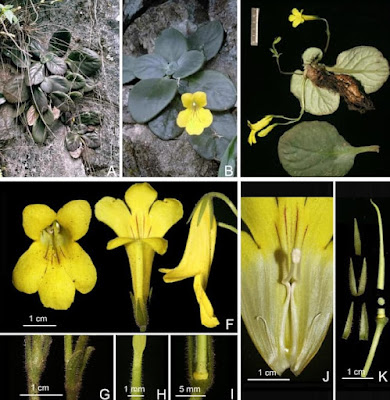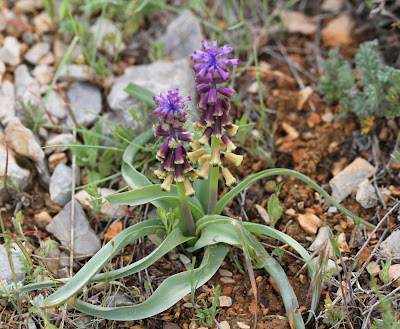-novataxa_2024-Wong_Teerawat_Sungkaew_.jpg) |
T. similis (Craib) K.M.Wong & L.Neo comb. nov.,
T. collinsiae (Craib) K.M.Wong, Teerawat. & Sungkaew comb. nov.,
Thaigardenia Sungkaew, Teerawat., Chamch. & K.M.Wong, gen. nov.
in Sungkaew, Arthan, Teerawatananon, Chamchumroon, Neo et Wong, 2024. Photos: D. Prathumthong, A. Teerawatananon and K.M. Wong. |
Abstract
Identified as Gardenia over a century ago, three known species from Thailand to south China differ considerably from typical members of that genus, from which growth habits, aspects of branch architecture and corolla shape set them apart. They form a new genus, here named Thaigardenia, the species of which are scrambling to thicket-forming shrubs to sometimes treelets or small trees. They have typically unequal (asymmetric) development of each internode that offsets what began as opposite pairs of axillary buds (and potential axillary branches) from subtending leaf axils at the same level, and small infundibular corollas with insignificant tubular bases. In contrast, typical Gardenia are non-scrambling shrubs or trees, often have extra-axillary buds or branches that consistently continue to develop at the same level (i.e., remaining opposite); and showy hypocrateriform (salverform) corollas with elongate tubular bases. The unequal development of different sides of an internode that brings an initially opposite pair of axillary buds (branches) to different levels, so that they do not appear paired subsequently, is, as far as is known, unique and unknown in other Rubiaceae or opposite-leaved plants; this shared feature is a key synapomorphic character for species of the newly recognised genus.
Keywords: Branch architecture, Gardenia, hypocrateriform, infundibular
--novataxa_2024-Wong_Neo.jpg) |
Open flower (inset) and fruiting twig of Thaigardenia similis (Craib) K.M.Wong & L.Neo, showing narrowly triangular lobes on a short calyx tube.
Photos: D. Prathumthong (flower) and A. Teerawatananon. |
Thaigardenia Sungkaew, Teerawat., Chamch. & K.M.Wong, gen. nov.
Thaigardenia is a new genus of the Rubiaceae, allied to Gardenia J.Ellis, differing in the species being shrubs with a scrambling to thicket-forming habit or small trees with crooked sympodial trunks (vs Gardenia s.s. which are mostly trees with monopodial trunks or non-thicket forming bushes), developing extra-axillary buds and branches at different distances from a leaf-pair at the same node on stems and branches (sometimes these extra-axillary buds more than one per leaf axil) (vs with extra-axillary buds and branches always at the same level, and solitary buds in Gardenia), broad-triangular stipules fused along their edges (vs typical Gardenia spp. with stipules fused into a cylindric sheath split slightly on one side), infundibular corolla with insignificant tubular bases much shorter than the inflated upper portion (vs hypocrateriform corollas with relatively long basal tubes with a hardly widened uppermost portion in Gardenia), and pollen issued as tetrads.
Type: Thaigardenia collinsiae (Craib) K.M.Wong, Teerawat. & Sungkaew.
Etymology.— The name Thaigardenia refers to Thailand, where studies into the taxonomy of this group were initiated, and where the generic type can be abundantly found, as well as Gardenia, the genus in which its species were earlier placed. Thailand has been eponymously included in the nomenclature of two other plant genera: Thaia Seidenf. (Orchidaceae) (Seidenfaden, 1975) and Thailentadopsis Kosterm. (Leguminosae) (Kostermans, 1977), both of which continue to be in use (Lewis & Schrire, 2003; Xiang et al., 2012).
Thaigardenia cambodiana (Pit.) K.M.Wong & Chamch., comb. nov.
Thaigardenia collinsiae (Craib) K.M.Wong, Teerawat. & Sungkaew, comb. nov.
Thaigardenia similis (Craib) K.M.Wong & L.Neo, comb. nov.
Incompletely understood taxon: Thaigardenia ‘Nhatrang’
Sarawood Sungkaew, Watchara Arthan, Atchara Teerawatananon, Voradol Chamchumroon, Louise Neo and Khoon Meng Wong. 2024.
Thaigardenia (Rubiaceae: Gardenieae), A New Genus distributed from Thailand to South China.
Thai Forest Bulletin (Botany). 52(1), 25–43. DOI:
10.20531/tfb.2024.52.1.04






-novataxa_2024-Wong_Teerawat_Sungkaew_.jpg)
--novataxa_2024-Wong_Neo.jpg)


































